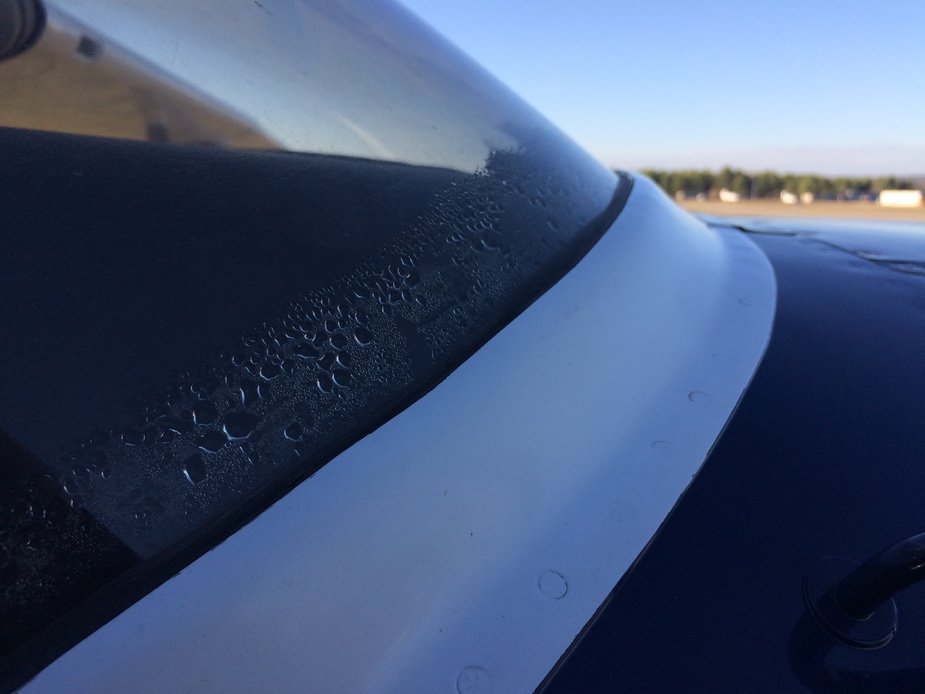The picture is from last year.
The condensation was actually in the morning, and water Ingress was also possible.
That’s why we remade the seal, without PR, but with silicone (whose application has been widely illustrated here :-))
Condensation in the morning disappeared immediately.
Unfortunately, silicone has not been flexible enough, and the seal is not tight anymore (you can see visually, I will post to show). So we must do it again, and Peter’s solution could be ok.
(The associated solution is to build a hangar, what i’m Ready to do, but politically it’s critical ! I would love to see my airplane into a hangar)
PetitCessnaVoyageur,
Is the window leaking for sure? Or is this just condensation from humidity in the cockpit overnight?
Apparently yes. There was a big warning on my conopies about this.
Yes, it would be crazy to use cyanoacrylate on windows, but does loctite thread locker contain that?
I use this for almost everything structural where I want a tight, seal. It also has rather good strength. I have even used it to glue curtain rods in my bathroom directly to the wall tiles  (6 years and still holding like a champ). Some have even used it to glue the canopy plexi glass on their RVs, instead of screwing it on. For pure sealant of acrylic, I guess this is better though, much cheaper at least, but haven’t tried it as of yet.
(6 years and still holding like a champ). Some have even used it to glue the canopy plexi glass on their RVs, instead of screwing it on. For pure sealant of acrylic, I guess this is better though, much cheaper at least, but haven’t tried it as of yet.
A problem with acrylic glass is that some sealants/glue etc will eventually crack it over time. It’s common to use loctite to secure the threads on screws, but that should never be done close to acrylic glass. Over time it will evaporate and crack it.
PR1422 is no good for the flexible seals required for plastic windscreens, as they expand and shrink over temperature.
So in your opinion, no need to go for the much more expensive PR stuff ?
3 years later, the Sikaflex 295UV job is still holding up fine 
I think most “silicone” on the market is of poor quality – designed to seal the gap behind a bath…
Hi !
Struggling with the bottom seal of my 182 Windscreen.
It’s been redone two times, and in the end, the space between the windscreen and white « rain flap » being flexible, the seal loses its watertightness.
PR was used initially, and silicone last time.
It wouldn’t stay efficient for more than a year.
I wonder what is your experience, and how long it would last (@Peter ?)
